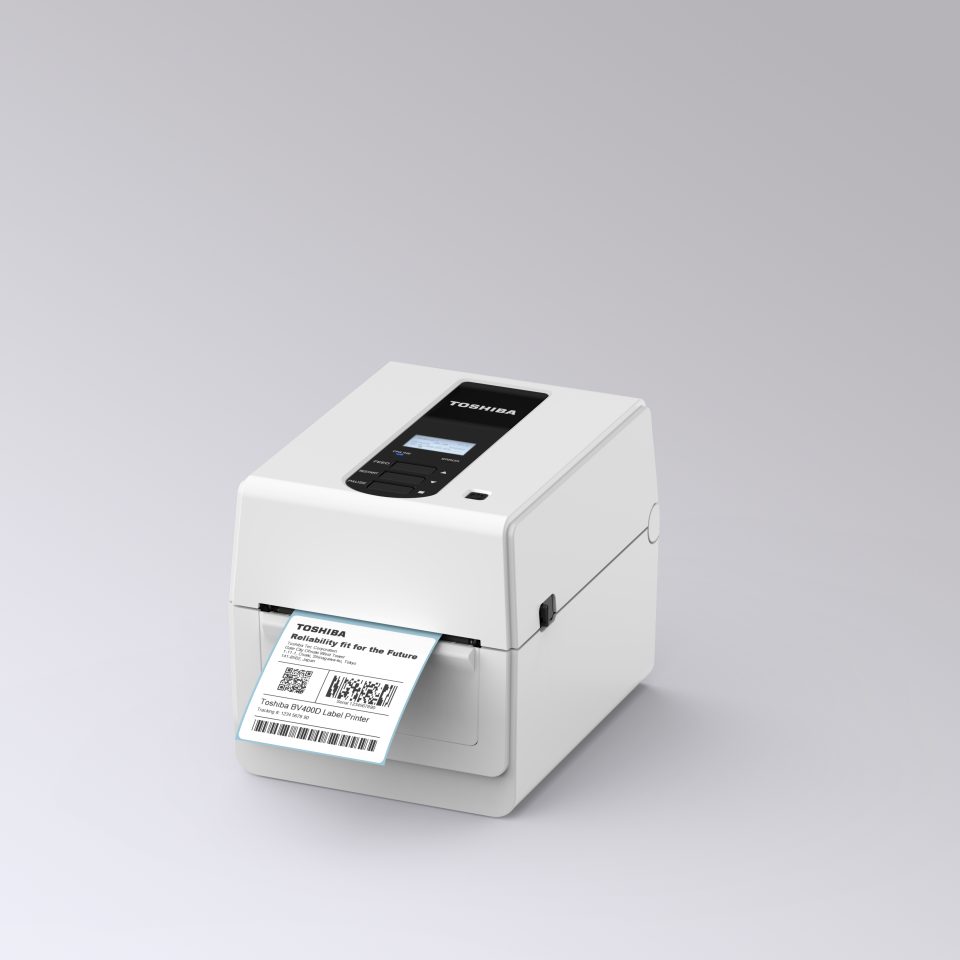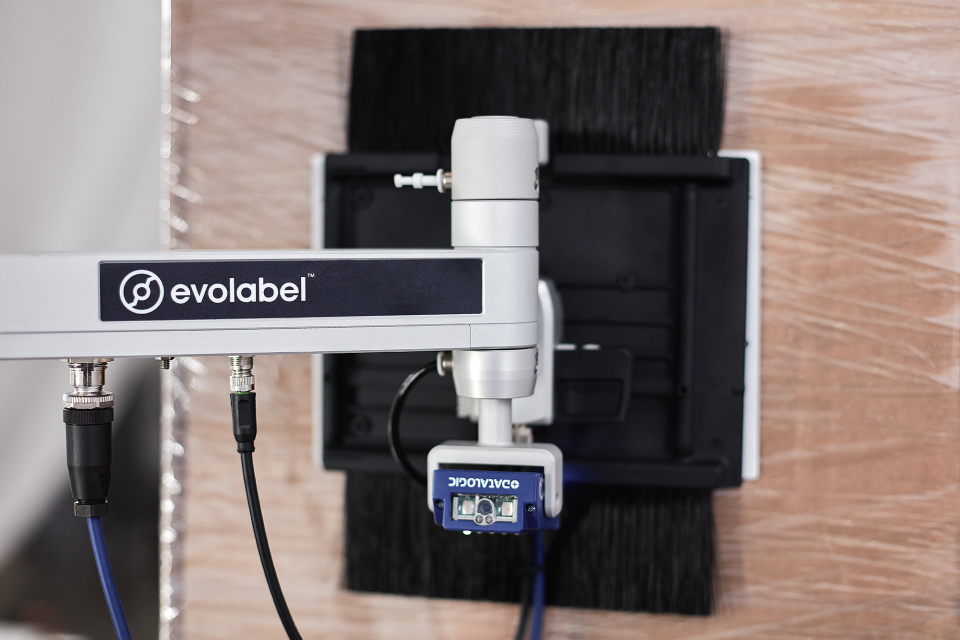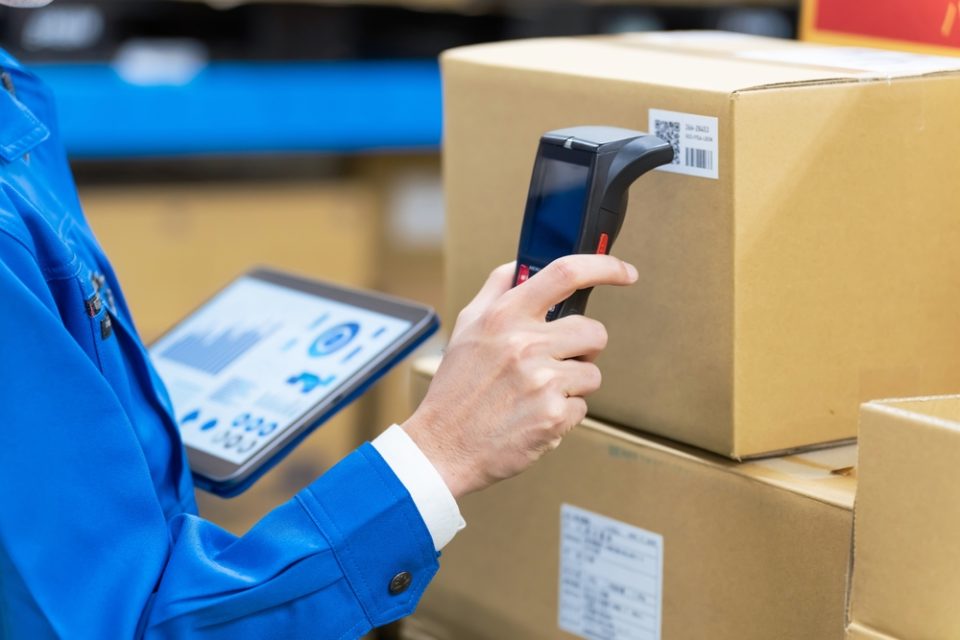Barcode and Radio-frequency Identification (RFID) technologies, integrated with a Print + Apply system, are powerful ways to enhance your product tracking and inventory management.
In this blog post we discuss the difference between barcode labelling systems and RFID labelling systems, the advantage of using each system for different applications, and how barcodes and RFID can form a valuable part of your Print + Apply System.
What is the difference between barcode labelling systems and RFID labelling systems?
Barcode labelling systems provide a cost-effective solution for product identification and tracking in cases where items need to be scanned individually. For inventory tracking this is ideal, as each item can be tracked using a physical barcode scanner that reads the barcode and logs the necessary information in the relevant systems.
If your customers already use barcode scanning then their existing hardware can be used to read the barcodes on your labels, helping to minimise costs and contributing to streamlined operations. Unlike barcode labels, which have to be scanned individually, RFID labels use Radio-Frequency Identification technology which enables remote inventory tracking and identification.
You might also see this type of label referred to as ‘smart labels’, and that’s because the RFID technology (a tiny microchip and antenna) is discreetly embedded in each label. The chip stores information, or data, about the item, whilst the antenna transmits that information wirelessly to an RFID scanner.
Since each label has a unique ID, individual items can be located quickly and precisely. This makes RFID labelling systems ideal for cases where assets need to be tracked but they are not in the line of sight, or where you have large quantities to track.
Either barcode labelling or RFID technology can be integrated into your Print + Apply system, enabling you to track orders and manage inventory with minimal effort.
Both types of label can be printed using Zebra Desktop Label Printers.
When to use barcode labelling systems
Since barcodes can be scanned quickly, inventory tracking is more efficient and accurate compared to manual methods, such as entering data into a spreadsheet or database by hand. Additionally, there is a reduced risk of human error when using barcode labelling systems.
The equipment needed for barcode labelling systems, which includes a desktop label printer and barcode scanner, is relatively low-cost and has minimal ongoing maintenance costs.
A barcode labelling system is particularly desirable where items need to be scanned rapidly, such as:
- Retail and point of sale
- Warehouse asset management
- Manufacturing settings (particularly for quality control)
- Medical inventory management
Barcode labels can also be used on items that may not be suitable for RFID labels, such as containers with liquids and metal packaging.
When to use RFID labelling systems
RFID labelling systems are especially advantageous in settings where inventory needs to be tracked somewhat remotely; in other words, when an individual item is not in hand in order to be scanned.
An RFID labelling system is a strong solution where inventory tracking needs to be automated, or where you require visibility of items through a production process or across the supply chain.
RFID labels can be read on mass, which provides great efficiency in situations where bulk scanning is appropriate. RFID systems also store and transmit data in real-time, which allows for more dynamic tracking. The speed and accuracy of RFID labelling systems can be a great advantage where auditing is a requirement.
RFID labels also offer greater security than barcode labels, since the information stored in the label has a unique identifier which can’t be copied. Additionally, if any sensitive information is stored on the label, such as customer details, the label can be encrypted to safeguard that data.
There are a wide range of applications for RFID labelling systems, including:
- In manufacturing settings, to improve quality control and production efficiency
- In retail settings, for inventory control, security, and supply chain management
- Streamlining operations in warehouse settings
- Any environment where real-time location tracking of assets is important
RFID labels can be printed using our desktop label printers, although specialist labels are required and RFID readers are needed to scan the labels.
Ready to gain real-time visibility into your inventory? Contact us for a consultation to explore how our barcode and RFID-enabled print + apply solutions can optimise your tracking processes.
Email Our Team
* Please complete all fields



